In Focus on the Front Line
An ER nurse’s snapshots of her coworkers shed light on the pandemic
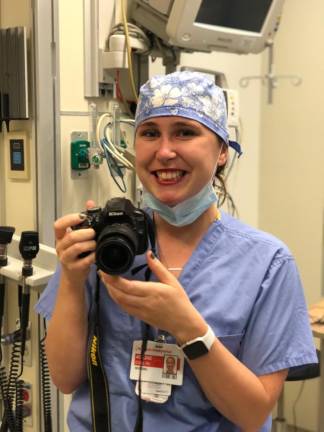
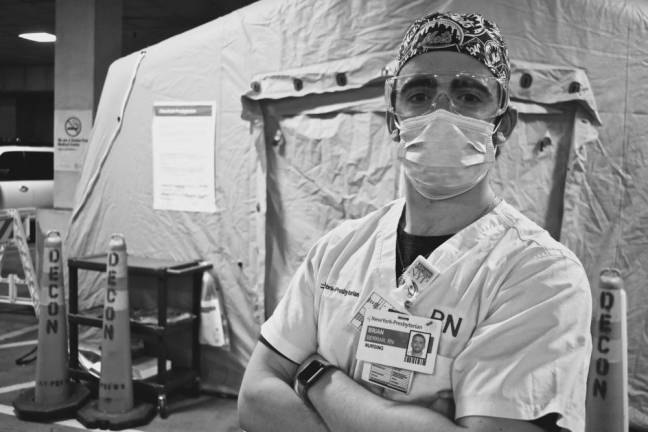
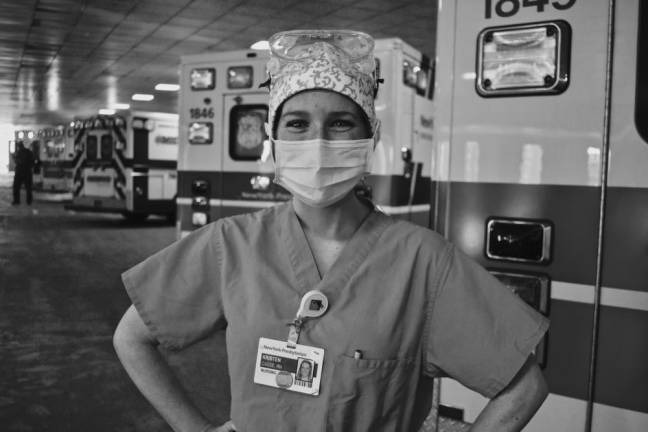
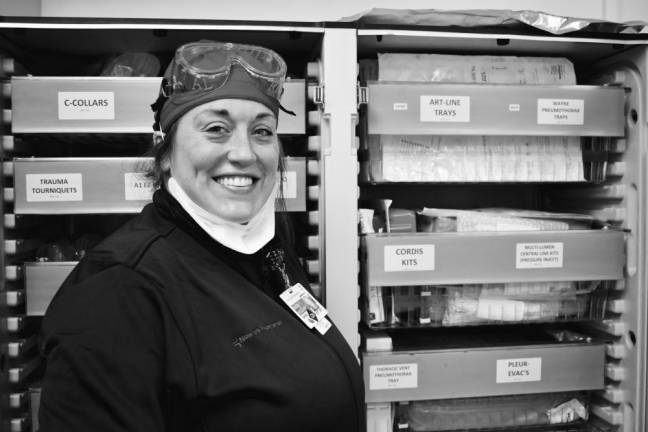
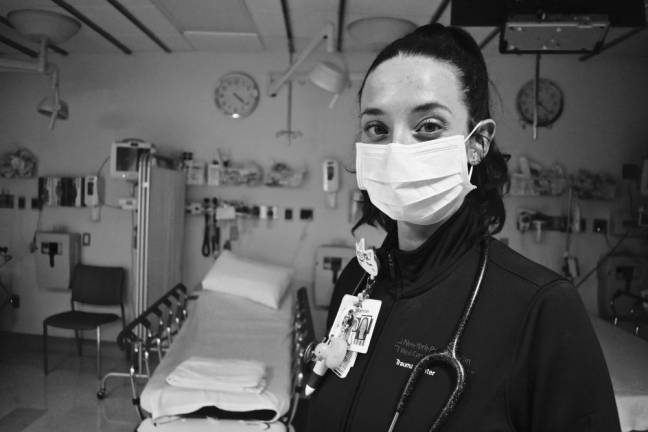
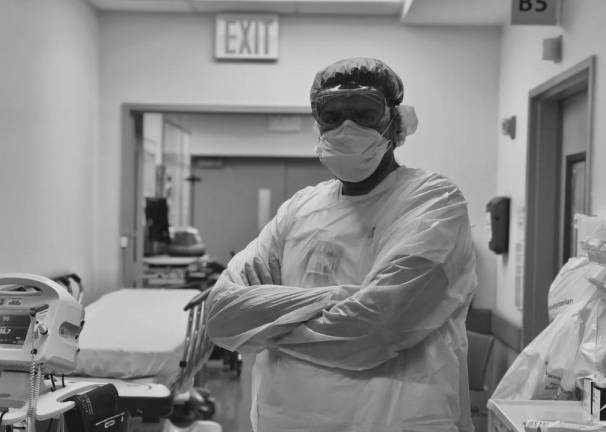
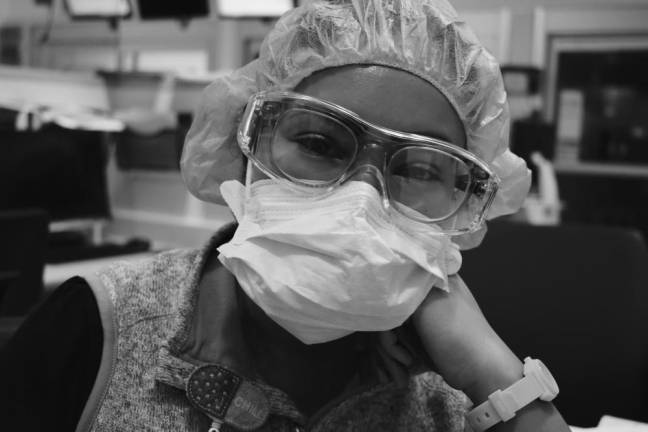
Addie Egan proudly refers to herself as an “ER nurse at heart.” And it is that love she has for her profession that keeps her positive - and productive - during this uncertain time. The 24-year-old is taking her camera onto the front lines during her breaks at NewYork-Presbyterian Weill Cornell Medical Center to give us a glimpse into the minds and hearts of her colleagues.
This poignant photo collection became “Faces of the Frontlines, a series that now has its own website, Facebook page and Instagram account. “Now we have these photos and stories and through social media, we’ve been able to share them, which has helped our staff connect with their family and friends, who they’re not able to physically be close to right now,” said Egan, a Boston native-turned-Murray Hill resident.
A graduate of Boston College, she wanted to become a nurse in order to be able to care for a whole person, mind, body and spirit. And it is through her treatment of COVID patients, where she said the approach can sometimes change from hour to hour, that she is constantly reminded of why she was called to this vocation. “I think these circumstances have really demanded that I not only be a competent nurse in caring physically for patients, but also caring for the whole patient,” she explained.
How do you choose your subjects? It’s nice that you’re also including parts of the hospital staff which usually don’t get as recognized.
I wanted to be really intentional about making it known that this whole frontline operation includes so many different people. And we really can’t operate without any of those pieces missing, so that includes our transport staff, environmental services, unit clerks, registration. We have patient service representatives who are advocates for patients throughout their stays. We hear about doctors and nurses all the time, but I wanted to highlight how much bigger the picture is. And there’s been a really great response. A lot of people are excited to share their stories and feelings about this experience.
What are the typical symptoms you’re seeing patients coming in with?
I don’t know if I would say there is a typical symptom, and that’s what’s so interesting about COVID. Of course, there are people coming in with shortness of breath and they don’t have great oxygenation saturation in their blood, but there have also been people who present with a gastrointestinal bug or abdominal or chest pain. There’s just no discrimination in terms of who this disease affects. And it’s surprising sometimes to see the people who come in and are sickest, because based on their age and history, you wouldn’t expect them to be as sick as they are.
In what ways has the role of a nurse has changed now?
Because of the need to isolate patients, we’ve been having screeners, who are nurses placed at the front entrance who have to ask family members to leave their loved ones at the front door. I haven’t held that position, but have colleagues who have. It’s very challenging for them. That has definitely been tolling and taxing, having to ask that of families and then having to take on the role of accompanying patients in a capacity that’s a little more all-encompassing.
Do you have time to be scared of catching the virus yourself?
Yeah, it’s definitely scary. I think this virus reminds us that we’re really not invincible. We’ve had coworkers hospitalized in our own hospital system, and who have come in through our own ER. We’ve had coworkers we’ve triaged and cared for in the ER and seen them go up to the ICUs. We’ve had colleagues throughout the hospital system who have passed. We’ve had and still have people upstairs who are sick. There’s a sense of fear that’s balanced by a sense of camaraderie. I think we see a lot of our own fears and uncertainties in the faces of our patients. I have a lot of admiration for my coworkers showing up day in and day out despite losing their own family members and seeing their own coworkers become sick.
How has the camaraderie among your fellow nurses been strengthened?
Everyone looks out for each other always, but in a different way now because I think a lot of us realize that we don’t have access to our families like we normally do, so we’re stepping up as family for one another as well. I know plenty of my coworkers who are parents or spouses who have been staying in hotels or in their basements, away from their families. We know what it’s like to be working on these patients, feeling vulnerable about our own health, and having to distance from our families. Those are all common experiences we’re all having and we feel closer than ever.
What acts of kindness have been shown to you by others?
It’s been amazing. This has been going on for two months and there hasn’t been a single day where we’ve had to worry about our own food. There have been donations every day of food, drinks, coffee. People have been bringing in headbands, handmade masks. A lot of my coworkers have kids who have made cards for us and videos thanking us. My own cousins made headbands with buttons on the side that offload the pressure of the masks on our ears.
How do you feel when you hear the nightly clapping?
It’s just so touching and moving to feel like the community is there with us and we’re not ever doing it alone. I’ve seen people with pink boas on fire escapes dancing and coordinating dances with their neighbors. And people having cocktail hour out on their balconies. I’ve had people who are out on runs who just stop in their tracks and clap for me, or even patients coming out of the hospital on crutches who will stop and clap.
This interview has been edited and condensed for space.
To see more of Addie’s frontline photography, visit her website, addieegan.wixsite.com/mysite or addieegan.photography on Instagram.